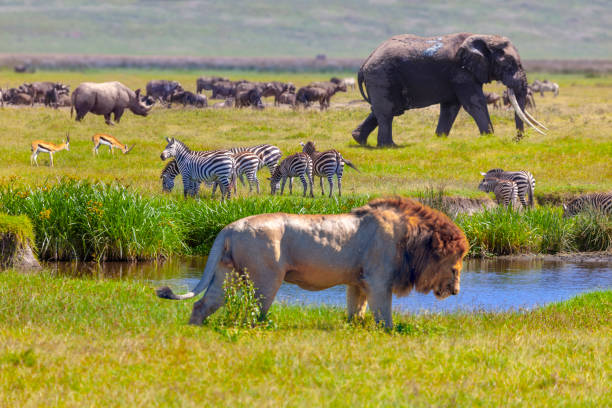"Decoding the Secrets of Animal Migration"
Have you ever wondered about the mysterious journeys of migratory animals? Every year, countless creatures undertake epic voyages, navigating across continents and oceans to reach their seasonal homes. This article delves into the fascinating world of animal migration, shedding light on the science behind it and its importance in global ecosystems.

The Phenomenon of Animal Migration
Animal migration is a natural occurrence that has fascinated humans for centuries. From the iconic wildebeest migration in Africa to the awe-inspiring journey of monarch butterflies, these mass movements are a testament to nature’s incredible resilience and adaptability.
Historically, observations of animal migration led to scientific breakthroughs. Ancient Greeks, for instance, first recognized bird migration, although they believed that birds hibernated in winter. By the 19th century, however, advancements in technology and research methodologies enabled more accurate tracking of migratory patterns, revealing the true extent of these remarkable journeys.
The Science Behind Migration
How do animals know when and where to migrate? The answer lies in a combination of instinct, environmental cues, and even the Earth’s magnetic field.
Animal migration is primarily driven by changes in food availability and breeding requirements. As seasons shift, many species embark on their journeys to exploit abundant resources elsewhere or to reach optimal breeding grounds.
Interestingly, many animals use the Earth’s magnetic field as a navigational tool. Research shows that species like sea turtles and birds can sense the magnetic field, using it to guide their long-distance travels.
Current Research and Discoveries
Today, technological advancements continue to unravel the mysteries of animal migration. Satellite tracking, for instance, has allowed scientists to monitor individual animals in real-time, yielding invaluable insights into their migratory routes and behaviors.
Recent studies have highlighted the impact of climate change on migration patterns. Changes in temperature and rainfall can alter the timing and pathways of migration, potentially disrupting ecosystems and threatening animal survival.
The Economic and Ecological Impact of Animal Migration
Animal migration plays a crucial role in our world’s ecology and economy. Migratory species contribute significantly to biodiversity, which is essential for ecosystem resilience. Their movements aid in the distribution of nutrients across different regions, supporting various life forms.
Economically, animal migration is vital for tourism in many parts of the world. The wildebeest migration in East Africa, for example, attracts thousands of tourists annually, contributing significantly to the region’s economy.
The Future of Animal Migration
Despite our growing understanding, the future of animal migration remains uncertain due to human-induced changes in the environment. Habitat loss, climate change, and pollution pose significant threats to migratory animals.
To protect these remarkable journeys, it is essential to invest in conservation efforts. Understanding and preserving migratory routes can help maintain biodiversity, ensure ecological balance, and sustain the economic benefits derived from these fascinating natural phenomena.
In conclusion, the world of animal migration is a testament to nature’s resilience and adaptability. It’s a complex and crucial aspect of our planet’s biodiversity that calls for our understanding and protection. As we continue to delve into this fascinating subject, one thing is certain: the journeys of these incredible creatures will continue to inspire awe and wonder in us all.




